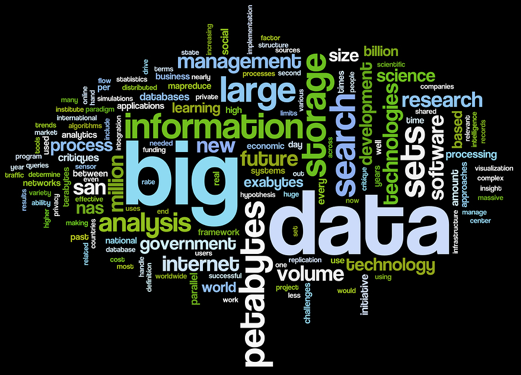

In all above three cases, big data is being consumed and used to drive action. But no real analysis is being conducted. Instead, an action is being delivered based on one particular data point. In the transit case, it is simply the destination of the nearest Tim Horton’s to that transit station. In the Staples case, it is simply the fact that I am in the store which has the particular product discount while the speeding alert in my car is predicated based on my current drive speed. As one can imagine, there are endless activities that can be suggested to the consumer based on the data point or activity that the consumer is currently exhibiting.
In the transit example, instead of just telling me the location of the nearest Tim Horton’s , the use of analytics could supplement this message by referring to products that I am most likely to purchase at that time of the day. Similarly in the Staples example, besides offering me discounted offer, Staples is able to recognize me as high value customer and to offer me more discounted offers. In the driving example, the use of this additional driving behavior information can be used to offer more flexible pricing arrangements regarding my premium based on improved and more timely predicted premium or rate. The incentive to more quickly adjust my premium downward would be a primary motivator in improving my driving behavior at least in the short-term.
Yet, in our Big Data world, most of the focus is on real-time action based on a point in time. However, companies that can augment these real-time actions with insights from analytics as demonstrated in the above paragraph will simply have a superior level of engagement with the end customer. Consider this hypothetical example where I am a huge Toronto Raptors basketball fan. Since my entire relationship in terms of all my purchase behavior(tickets and non-tickets) is being captured at the individual level, all kinds of product offers and discounts can be offered to me based on what I have done in the past but more importantly what I am expected to do in the future. Talk about the “WOW” factor as the Raptors are not only engaging me with a brand that I love but also engaging with me personally on specific products and services that are more meaningful to me.
Although the use of real-time information in a Big Data environment represents a significant advancement, the next challenge for most of us in the Big Data world is to look at the data from a longitudinal perspective in order to get the historical view of the customer. It is this longitudinal view of the data that allows us to conduct the more advanced type analytics and to ultimately develop predictive analytics solutions. This is the real Holy Grail in Big Data as real-time offers and actions can be presented to customers based on predictive analytics solutions rather than the current data point or activity..